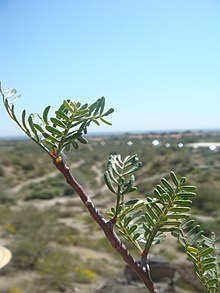Bursera microphylla
| Bursera microphylla | |
|---|---|
 |
|
| Scientific classification | |
| Kingdom: | Plantae |
| (unranked): | Angiosperms |
| (unranked): | Eudicots |
| (unranked): | Rosids |
| Order: | Sapindales |
| Family: | Burseraceae |
| Genus: | Bursera |
| Species: | B. microphylla |
| Binomial name | |
|
Bursera microphylla Gray 1861 |
|
 |
|
| Natural range of Bursera microphylla | |
| Synonyms | |
|
|
Bursera microphylla is a North American species of tree in the Frankincense Family in the soapwood order. Bursera microphylla, known by the common name elephant tree in English or 'torote' in Spanish, is a tree in genus Bursera. It grows into a distinctive sculptural form, with a thickened, water-storing or caudiciform trunk. It is found in the southwestern United States and northwestern Mexico.
Bursera microphylla is the most northerly member of the Burseraceae in North America and also perhaps the most xeromorphic (desert-adapted) species within the genus as it thrives in the extremely arid desert hills and mountains in northwest Sonora. This tree is native to northwestern Mexico (Baja California, Baja California Sur, Sinaloa, Sonora and Zacatecas) and the southwestern United States (southern California and Arizona; especially in desert regions. Some of the populations lie inside Anza-Borrego Desert State Park, Organ Pipe Cactus National Monument, Cabeza Prieta National Wildlife Refuge, Ironwood Forest National Monument, Sonoran Desert National Monument, Pinacate and Gran Desierto Biosphere Reserve, Islas del Golfo de California Biosphere Reserve, Cabo Pulmo National Park, El Vizcaíno Biosphere Reserve, , and Sierra de San Pedro Mártir National Park.
...
Wikipedia
